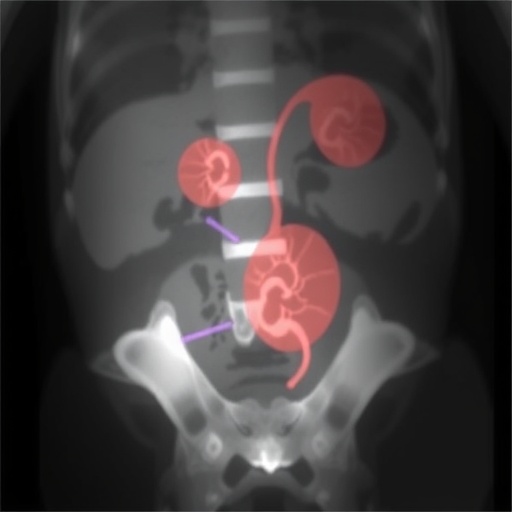ATLANTA – Today, the American College of Rheumatology (ACR), in partnership with the Arthritis Foundation (AF), released two guidelines on juvenile idiopathic arthritis (JIA). One guideline aims to provide therapeutic approaches for non-systemic polyarthritis, sacroilitis and enthesitis; and the other focuses on the screening, monitoring and treatment of JIA with associated uveitis.
Juvenile arthritis (JA) is a common, chronic childhood disease that affects nearly 300,000 children in the United States. According to the AF, juvenile arthritis is not a disease in itself, but is an umbrella term used to describe the autoimmune and inflammatory conditions or pediatric rheumatic diseases, like JIA, that can develop in children younger than 16.
With JIA, the term idiopathic means “of unknown origin.” All forms of JIA are associated with a decreased health-related quality of life, a risk for permanent joint damage, and the likelihood that the disease may persist into adulthood.
A few of the recommendations from the JIA polyarthritis guideline include:
- Conditional recommendations that NSAIDs and intraarticular glucocorticoids should each be used as adjunct therapy.
- A strong recommendation against adding chronic low-dose glucocorticoid, regardless of risk factors or disease activity.
- A conditional recommendation to get physical therapy and/or occupational therapy for children and adolescents with JIA and polyarthritis who have, or are at risk for, functional limitations.
“These recommendations highlight the importance of prompt and effective treatment for children with JIA and polyarthritis, sacroiliitis, and enthesitis,” said Sarah Ringold, MD, MS, a pediatric rheumatologist at Seattle Children’s Hospital and the principal investigator on this guideline. “They also support relatively tight disease control, with inactive disease as the goal. While it is anticipated that these recommendations will lead to improved outcomes for children with JIA and these phenotypes, they also emphasize the ongoing need to generate high-quality data about treatment effectiveness in JIA.”
As noted, JIA can impair a child’s quality of life–especially when extra-articular manifestations occur. A common manifestation is uveitis, which can be a chronic or acute disease. Chronic anterior uveitis (CAU) develops in 10-20 percent of children with JIA, is usually asymptomatic, and there is rarely external evidence of inflammation. On the other hand, acute anterior uveitis (AAU) is a distinctly different form of uveitis and typically occurs in children with spondyloarthritis (i.e., those with enthesitis related or psoriatic arthritis).
Important recommendations from the JIA-associated uveitis guideline include:
- A strong recommendation to get ophthalmologic monitoring within one month after each change of topical glucocorticoids rather than monitoring less frequently for children and adolescents with controlled uveitis who are tapering or discontinuing topical glucocorticoids.
- A conditional recommendation to start methotrexate and a monoclonal antibody TNFi immediately rather than methotrexate as a monotherapy in children and adolescents with severe, active CAU and sight-threating complications.
- A strong recommendation for education regarding the warning signs of AAU for the purpose of decreasing delay in treatment, duration of symptoms, or complications of iritis for children and adolescents with spondyloarthritis.
“Prevention of sight-threatening complications from uveitis is most important. It is crucial that children with JIA undergo scheduled ophthalmology screening to detect uveitis early since children are usually asymptomatic,” said Sheila T. Angeles-Han, MD, MSc, a rheumatologist at the Cincinnati Children’s Hospital and principal investigator for this guideline.
The JIA guidelines were developed using the Grading of Recommendations Assessment, Development and Evaluation (GRADE) methodology, which provides rigorous standards for judging the quality of the literature available and assigns strengths to the recommendations that are largely based on the quality of the available evidence. The guideline process also included significant input from patients and parents, which was made possible through the ACR and AF partnership. “We are proud to have been involved in this work and to witness the important contributions of the patient and parent partners,” said M. Suz Schrandt, JD, who serves as the director of patient engagement for AF. “Their lived experiences truly helped to guide the project.”
Although the quality of evidence was low or very low and most recommendations were therefore conditional for both, these guidelines fill an important clinical gap in the care of children with JIA, including non-systemic polyarthritis, sacroilitis and enthesitis, and JIA-associated uveitis, and may be updated as better evidence becomes available.
###
About the American College of Rheumatology
The American College of Rheumatology is an international medical society representing over 9,400 rheumatologists and rheumatology health professionals with a mission to empower rheumatology professionals to excel in their specialty. In doing so, the ACR offers education, research, advocacy and practice management support to help its members continue their innovative work and provide quality patient care. Rheumatologists are experts in the diagnosis, management and treatment of more than 100 different types of arthritis and rheumatic diseases. For more information, visit http://www.
About the Arthritis Foundation
The Arthritis Foundation is the Champion of Yes. Leading the fight for the arthritis community, the Foundation helps conquer everyday battles through life-changing information and resources, access to optimal care, advancements in science and community connections. The Arthritis Foundation’s goal is to chart a winning course, guiding families in developing personalized plans for living a full life – and making each day another stride toward a cure. The Foundation also publishes Arthritis Today, the award-winning magazine that reaches 4 million readers. For more information, visit http://www.
Media Contact
Monica McDonald
[email protected]




